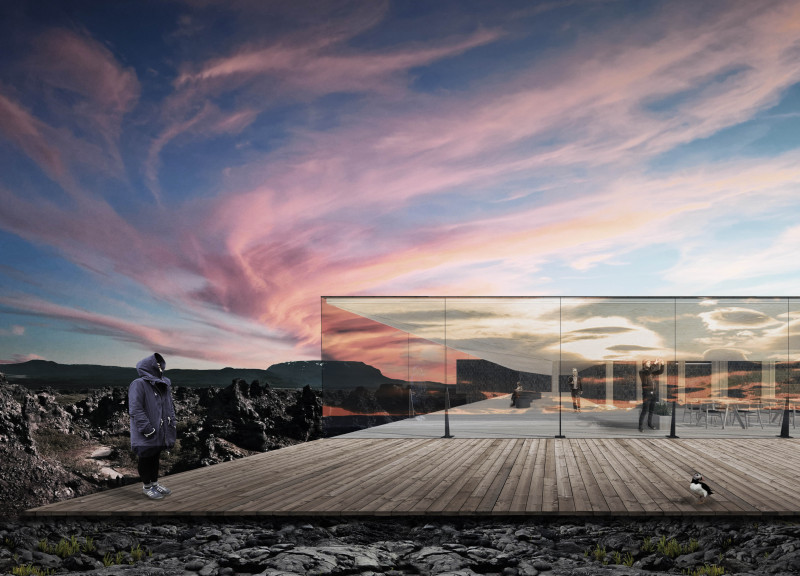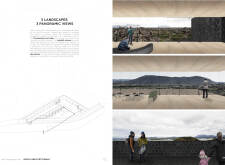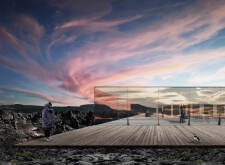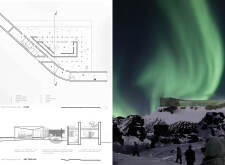5 key facts about this project
The Dimmuborgir Wall is set in the dramatic landscape of Iceland, specifically within the Dimmuborgir lava fields, near the Hverfjall volcano and Lake Mývatn. Its design thoughtfully considers the surrounding nature while providing a space for visitors to connect with the environment. The main idea involves a lavastone wall that acts as both a physical boundary and a frame for the stunning views, creating a dialogue between architecture and landscape.
Architecture Concept
The lavastone wall rises from the ground, hiding some views while allowing others to emerge through carefully placed openings. These gaps serve as reflective surfaces, capturing the sky and bringing sunlight into the interior. This approach helps to blend the indoor and outdoor spaces, resulting in a fluid experience as visitors move through the building.
Visitor Experience
When guests arrive, they enter through reflective doors that lead into a short tunnel. This transition helps separate the vast outdoor area from the more intimate indoor space. Inside, sloped pathways guide visitors through three distinct landscapes, each revealing different vistas. The journey starts with wide views of the Dimmuborgir lava fields, shifts to the sight of the Hverfjall volcano, and concludes with an outlook over Lake Mývatn from an elevated position.
Sustainability
Sustainability is an important aspect of the design. Geothermal energy systems take advantage of the natural heat found in the area. Additionally, the lavastone wall contributes to maintaining a stable indoor climate. A graywater system recycles water within the building, while wool insulation enhances energy efficiency. These features show a commitment to environmental care without sacrificing the building's functionality.
Detailing
The design prioritizes accessibility and family-friendly spaces. Parents can keep watch over their children while enjoying the vistas provided by the landscape. At the top of the wall, the view opens up to the black lava fields, allowing visitors to appreciate the connection between architecture and nature in a straightforward and engaging way.





















































